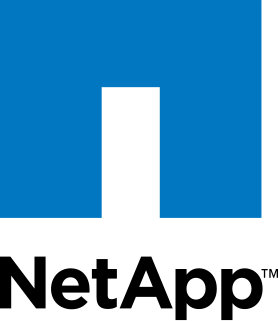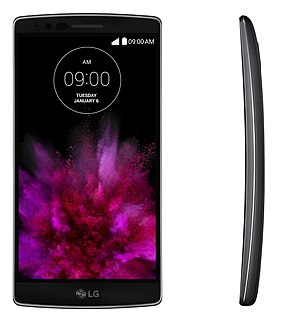Adobe Flash is a multimedia software platform used for production of animations, rich web applications, desktop applications, mobile apps, mobile games, and embedded web browser video players. Flash displays text, vector graphics, and raster graphics to provide animations, video games, and applications. It allows streaming of audio and video, and can capture mouse, keyboard, microphone, and camera input.

A pager is a wireless telecommunications device that receives and displays alphanumeric or voice messages. One-way pagers can only receive messages, while response pagers and two-way pagers can also acknowledge, reply to and originate messages using an internal transmitter.
A Controller Area Network is a robust vehicle bus standard designed to allow microcontrollers and devices to communicate with each other's applications without a host computer. It is a message-based protocol, designed originally for multiplex electrical wiring within automobiles to save on copper, but it can also be used in many other contexts. For each device, the data in a frame is transmitted sequentially but in such a way that if more than one device transmits at the same time, the highest priority device can continue while the others back off. Frames are received by all devices, including by the transmitting device.

NetApp, Inc. is an American hybrid cloud data services and data management company headquartered in Sunnyvale, California. It has ranked in the Fortune 500 since 2012. Founded in 1992 with an IPO in 1995, NetApp offers cloud data services for management of applications and data both online and physically.
A vehicle bus is a specialized internal communications network that interconnects components inside a vehicle. Special requirements for vehicle control such as assurance of message delivery, of non-conflicting messages, of minimum time of delivery, of low cost, and of EMF noise resilience, as well as redundant routing and other characteristics mandate the use of less common networking protocols. Protocols include Controller Area Network (CAN), Local Interconnect Network (LIN) and others. Conventional computer networking technologies are rarely used, except in aircraft, where implementations of the ARINC 664 such as the Avionics Full-Duplex Switched Ethernet are used. Aircraft that use AFDX include the B787, the A400M and the A380. Trains commonly use Ethernet Consist Network (ECN). All cars sold in the United States since 1996 are required to have an On-Board Diagnostics connector, for access to the car's electronic controllers.

Audio Stream Input/Output (ASIO) is a computer sound card driver protocol for digital audio specified by Steinberg, providing a low-latency and high fidelity interface between a software application and a computer's sound card. Whereas Microsoft's DirectSound is commonly used as an intermediary signal path for non-professional users, ASIO allows musicians and sound engineers to access external hardware directly.
FLEX is a communications protocol developed by Motorola and used in many pagers. FLEX provides one-way communication only, but a related protocol called ReFLEX provides two-way messaging.

Apache Flex, formerly Adobe Flex, is a software development kit (SDK) for the development and deployment of cross-platform rich web applications based on the Adobe Flash platform. Initially developed by Macromedia and then acquired by Adobe Systems, Adobe donated Flex to the Apache Software Foundation in 2011 and it was promoted to a top-level project in December 2012.
ReFLEX is a wireless protocol developed by Motorola, used for two-way paging, messaging, and low-bandwidth data. It is based on the FLEX one-way paging protocol, adding capabilities for multiple forward channels, multiple return channels, and roaming. It originally came in two variants, ReFLEX25 and ReFLEX50. ReFLEX50 was originally developed to support a messaging service launched by MTEL in the mid 1990s, while ReFLEX25 was developed several years later to provide an upgrade path for traditional one-way paging carriers. The 50 and 25 signified 50 kHz and 25kHz channel spacing, although in reality both variants supported flexible channel configurations. The two variants were unified into a single protocol with version 2.7, which was released simply as ReFLEX 2.7. Devices compliant with ReFLEX 2.7 are backwards compatible with both ReFLEX25 and ReFLEX50 networks, with several new features to improve roaming, performance, and interoperability between different networks. ReFLEX systems support forward channel speeds of 1600, 3200, and 6400 bits per second, and return channel speeds of 800, 1600, 6400, and 9600 bits per second. Like FLEX, ReFLEX is synchronous, based on 1.875 second frames and 4-level FSK modulation.
A High Assurance Internet Protocol Encryptor (HAIPE) is a Type 1 encryption device that complies with the National Security Agency's HAIPE IS. The cryptography used is Suite A and Suite B, also specified by the NSA as part of the Cryptographic Modernization Program. HAIPE IS is based on IPsec with additional restrictions and enhancements. One of these enhancements includes the ability to encrypt multicast data using a "preplaced key". This requires loading the same key on all HAIPE devices that will participate in the multicast session in advance of data transmission. A HAIPE is typically a secure gateway that allows two enclaves to exchange data over an untrusted or lower-classification network.
Novell Embedded Systems Technology (NEST) was a series of APIs, data formats and network protocol stacks written in a highly portable fashion intended to be used in embedded systems. The idea was to allow various small devices to access Novell NetWare services, provide such services, or use NetWare's IPX protocol as a communications system. Novell referred to this concept as "Extended Networks", and when the effort was launched they boasted that they wanted to see one billion devices connected to NetWare networks by year 2000. NEST was launched in mid-1994 countering Microsoft's similar Microsoft at Work efforts, which had been launched in 1993.

Adobe AIR is a cross-platform runtime system currently developed by Harman International for building desktop applications and mobile applications, programmed using Adobe Animate, ActionScript, and optionally Apache Flex. It was originally released in 2008. The runtime supports installable applications on Windows, macOS, and mobile operating systems, including Android, iOS and BlackBerry Tablet OS.

An 802.15.4 radio module is a small device used to communicate wirelessly with other devices according to the IEEE 802.15.4 protocol.
TRILL is an Internet Standard implemented by devices called TRILL switches. TRILL combines techniques from bridging and routing and is the application of link-state routing to the VLAN-aware customer-bridging problem. Routing bridges (RBridges) are compatible with and can incrementally replace previous IEEE 802.1 customer bridges. They are also compatible with IPv4 and IPv6 routers and end nodes. They are invisible to current IP routers and, like routers, RBridges terminate the bridge spanning tree protocol.

CANape is a software tool from Vector Informatik. This development software, widely used by OEMs and ECU suppliers of automotive industries is used to calibrate algorithms in ECUs at runtime.
Intelligent Resilient Framework (IRF) is a proprietary software virtualization technology developed by H3C (3Com). Its core idea is to connect multiple network devices through physical IRF ports and perform necessary configurations, and then these devices are virtualized into a distributed device. This virtualization technology realizes the cooperation, unified management, and non-stop maintenance of multiple devices. This technology follows some of the same general concepts as Cisco's VSS and vPC technologies.
Hewlett Packard Enterprise and its predecessor entities have a long history of developing and selling networking products. Today it offers campus and small business networking products through its wholly owned company Aruba Networks which was acquired in 2015. Prior to this, HP Networking was the entity within HP offering networking products.

LG G Flex 2 is an Android phablet developed and manufactured by LG Electronics. First unveiled by the company on January 5, 2015, it is a successor to the original LG G Flex released in 2013. The design of the G Flex 2 resembles the LG G3, and as with the original, is differentiated primarily by its curved body and flexible display. LG announced several changes from the original G Flex design, including a smaller, higher-resolution display; reduced body curvature; stronger, chemically-treated screen glass; and a new iteration of the original's "self-healing" back cover that can more quickly repair minor abrasions.

The Olio Model One is a discontinued smartwatch sold from 2015 to 2016 by the now defunct Olio Devices, Inc.








